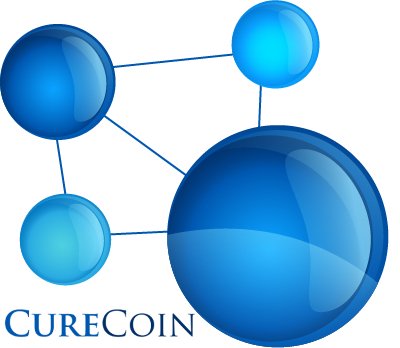Can Cryptocurrency beat deadly diseases?

Ethics and finance are two concepts which rarely go hand in hand. The rather disturbing reputation which finance has gained over the centuries might have come to an end sooner than most previously believed.
A project called CureCoin working in partnership with Stanford University has created a coin built off the concept of using both CPUs/GPUs and ASIC Miners. One of the main ideas behind the project is to strongly reduce the large amount of computer power which is require to mine Bitcoin, hence reducing wastage quite drastically. A home computer would be able to mine the coin without facing such high energy bill. Performing a protein simulation requires a fraction of computer power which Bitcoin currently requires.
However, the best is still to come, CureCoin replaces the traditional calculations for protein folding, a task which is required to find the cure for diseases such as Cancer and Alzheimer's. By participating in the CureCoin network, not only do miners save electricity, but they most importantly help scientists discover the cure for those diseases.
The question is, how can this coin actually help scientists you might ask?
Well, throughout the mining process, your computer will be simulating protein behaviour and provide the date produced to Stanford University which will help scientific community to advance medicine.
The combination and partnership between CureCoin and medicine will perhaps be the beginning of a solution which humanity has been seeking for a very long time. We have heard of decentralised companies, service and finance. However, for the first time we have been introduced to a decentralised solution to cure illness.
Let’s get technical
Leveraging the blockchain for science
A blatant problem that has plagued cryptocurrencies since their inception is the huge amount of electricity their networks consume. By nature, these networks require participants to compute a Proof of Work to help secure transactions. However, these proofs of work most often have no intrinsic value. Curecoin presents itself as the solution to this problem.
Eighty percent of all computations performed while mining CureCoin are directed at research, while the rest contribute to network security. Because of that reward distribution algorithm, cryptographic mining difficulty using the SHA-256 function is soft-capped, and a portion of the network is incentivized to perform scientific calculations.
Because most computations are not cryptographic in nature and vary depending on the task at hand, a home computer would be able to mine the coin without facing the high energy bill of ASIC farms. CureCoin currently implement a protein folding proof of work and partner with Stanford University to help advance medicine. Performing a protein simulation requires a fraction of computer power which Bitcoin currently requires.
This modified proof of work has more than simply ethical benefits. CureCoin is a currency tradable for actual research, thus greatly supporting the price of the coin and making it a safer investment than most other cryptocoins. Moreover, it offers good growth opportunity as the world accelerates its transition to a knowledge-based economy which increasingly values research.
Future development
The cryptocurrency is poised to receive a considerable update in the future, adequately and simply dubbed Curecoin 2.0. It will notably make the coin the first one to implement quantum-resistant merkle signature, giving investors yet another reason to incorporate it in their portfolio to hedge against the long term risks held by other coins.
Today, the Curecoin Team’s combined computational output is 29 PetaFLOPSwhich counts for about 39% of the Folding@home network. This means the team produces molecular research at rates comparable to some multi-million dollar supercomputers.
Furthermore, there are over 8,000 registered Folding@home user accounts, with over 900 active individuals folding on any given day folding for CURE.
In addition to that, market price of our token over the last 60 days has ranged between $.12 and $.22 USD, trading volume over the last 60 days has peaked at over $800,000 USD on a single day, as a result, the markets are catching on to the utility proposition which the project offers.
The Curecoin team has shipped a new, more secure wallet version 1.9.2.1, with more changes in the pipeline for 1.9.4.x to make the current version of Curecoin an even better user experience. Moreover, the Curecoin Team has added several new team members, including EvergreenCoin’s founder and developer – Steven Saxton.
Another great initiative is that Curecoin has created a separate, 501c3 sponsored Curecoin Project, whose to-date contributions to scientific, medical and social organizations has surpassed $17,000 USD. We have the ability to accept donations via Paypal, direct USD, and Amazon Smile donations. Currently we have over 15,000 tokens listed on exchanges destined for conversion to charitable giving.
Curecoin 2.0 will soon be soliciting applicants for a broader internal beta test. The core team will be ready to start receiving feedback from individuals with targeted skills in the QA process. There will however be some changes coming to the plan-of-record regarding a standalone version of SigmaX and integration of Proof-of-Proof – so please stay tuned to our bitcointalk ANN thread.
Finally
Curecoin has so far proven to be the most generous project ever created in the Cryptocurrency and Blockchain world, a real breakthrough when technology and medicine meet finance. It has never been so ethical to become an investor. Curecoin can deliver real results for people in real need. The project aims to make today’s disease an issue of the past.
Sources
https://curecoin.net/dev-blog/
https://curecoin.net/knowledge-base/knowledge-base-faq/